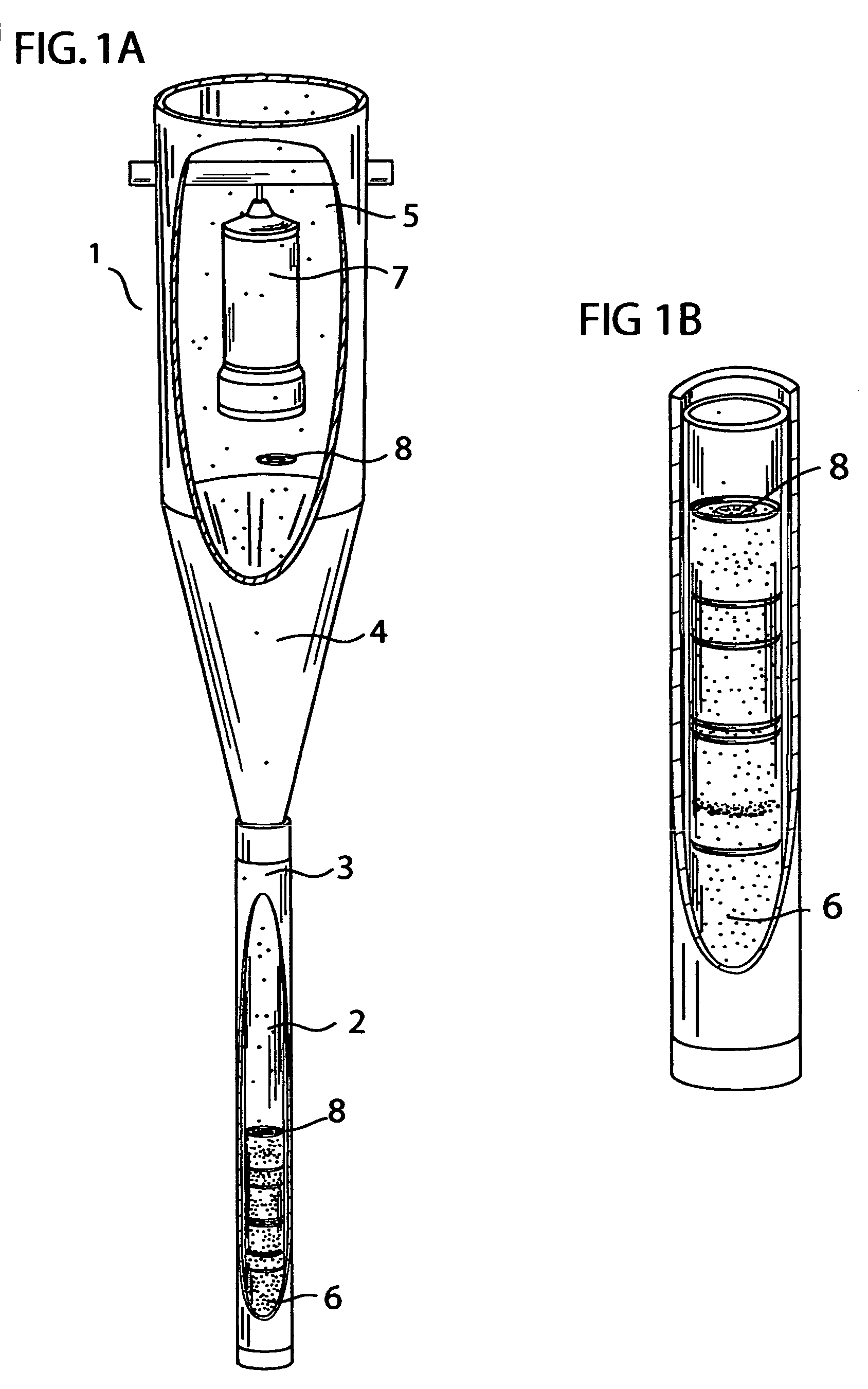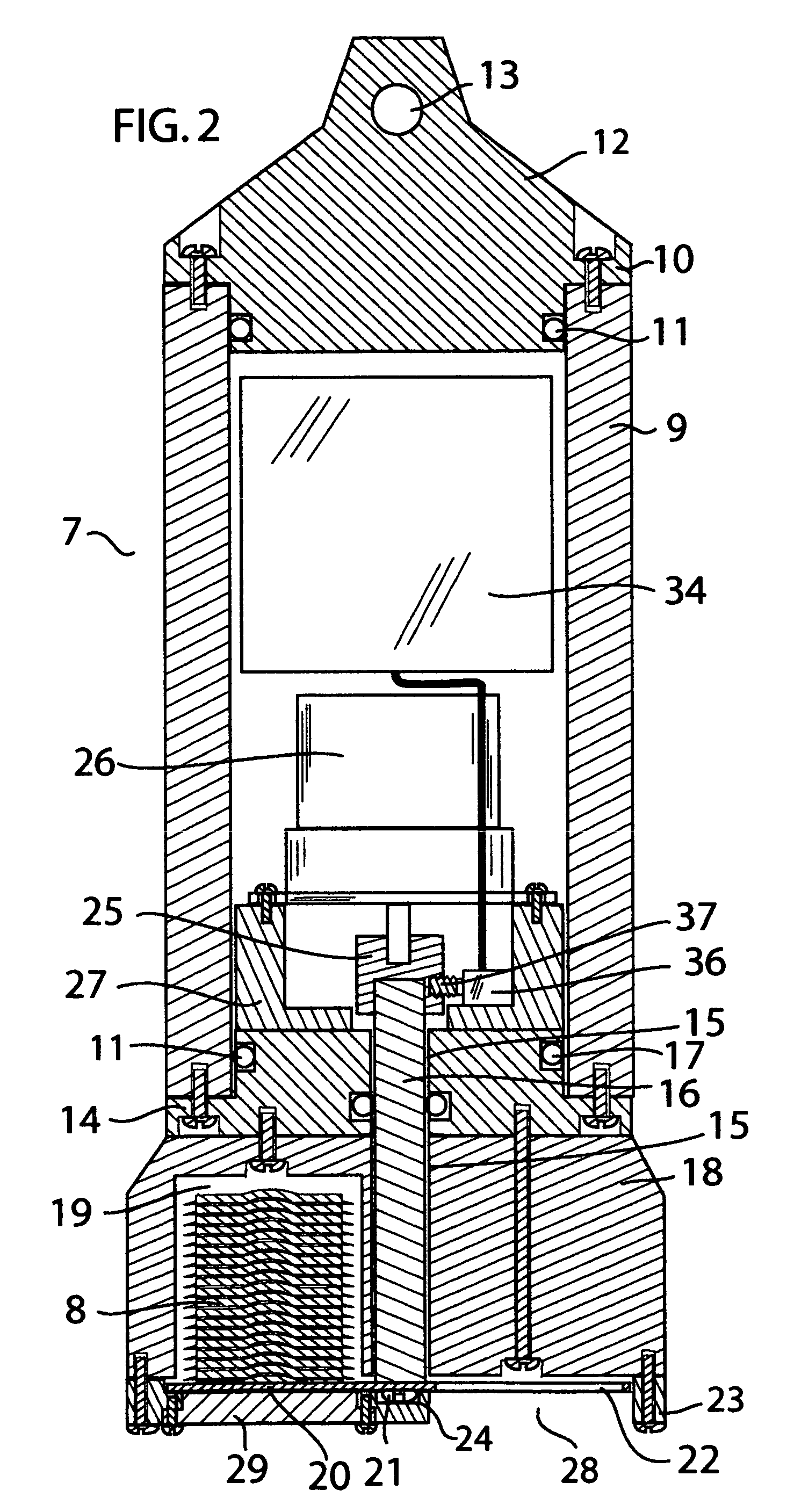Partitioning sediment trap
a sediment trap and separation technology, applied in the field of sediment trap separation, can solve the problems of limited sampling accuracy, limited application range, and failure to identify a time-marked interval, and achieve the effects of expanding investigations, simple design of dispensing devices, and small siz
- Summary
- Abstract
- Description
- Claims
- Application Information
AI Technical Summary
Benefits of technology
Problems solved by technology
Method used
Image
Examples
Embodiment Construction
[0024]Referring now to FIGS. 1A and 1B of the drawings, there is shown a partitioning sediment trap, generally designated 1, which has several components in common with the aquatic sediment and pollution monitor described and claimed in my prior U.S. Pat. No. 3,715,913. More specifically, partitioning sediment trap 1 includes a collecting tube 2 having an open upper end and a closed lower end for collecting and storing, over a relatively long period of time, materials, contaminants, and pollutants in a water body. Collecting tube 2 is positioned within a housing tube 3 which is connected adjacent the small diameter end of a cone 4 that magnifies the rate of accumulation of suspended particles 5. The small diameter end of the magnifying cone 4 extends into the collecting tube 2, which is held in position by the housing tube 3. Suspended particles 5 in the water body entering the large diameter opening of the magnifying cone 4 come to rest as settled particles 6 above the lower closed...
PUM
 Login to View More
Login to View More Abstract
Description
Claims
Application Information
 Login to View More
Login to View More - R&D
- Intellectual Property
- Life Sciences
- Materials
- Tech Scout
- Unparalleled Data Quality
- Higher Quality Content
- 60% Fewer Hallucinations
Browse by: Latest US Patents, China's latest patents, Technical Efficacy Thesaurus, Application Domain, Technology Topic, Popular Technical Reports.
© 2025 PatSnap. All rights reserved.Legal|Privacy policy|Modern Slavery Act Transparency Statement|Sitemap|About US| Contact US: help@patsnap.com



